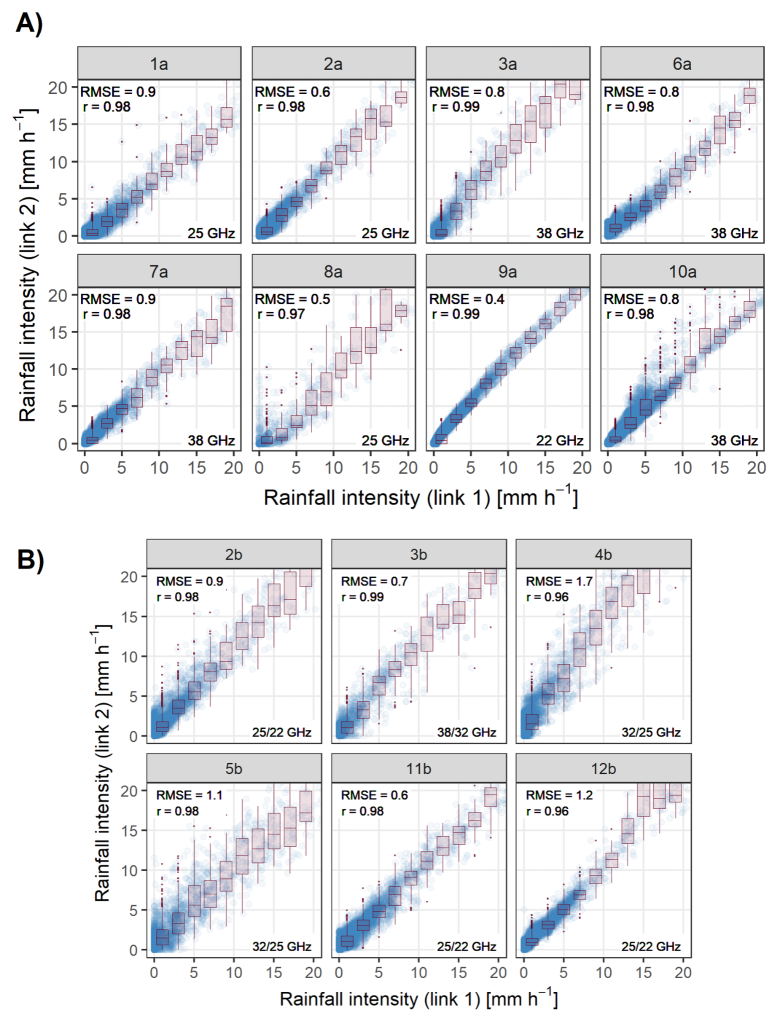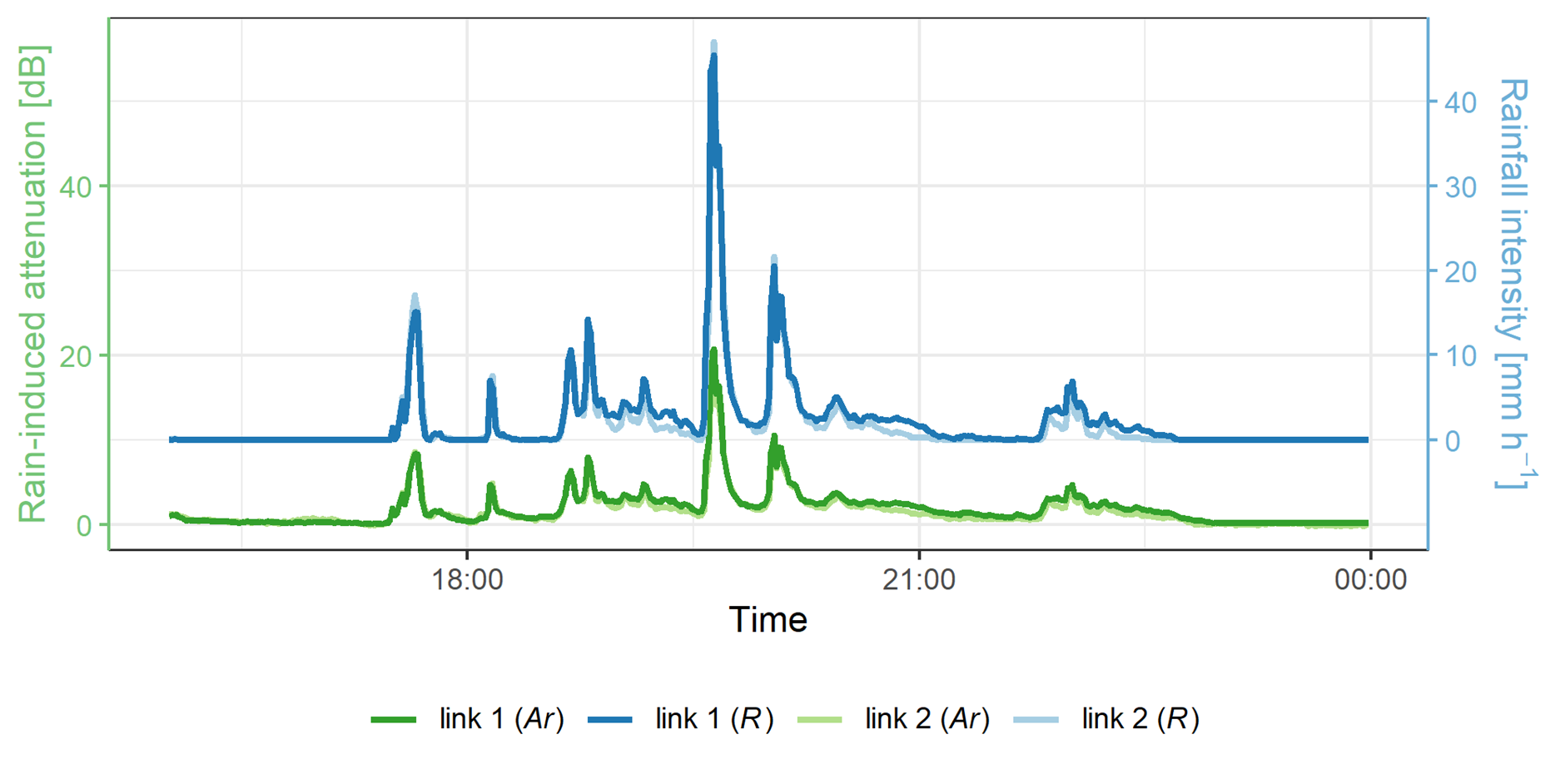Until now, studies evaluating commercial microwave links (CMLs) reliability have focused on comparisons with traditional observations used for reference, although the path-integrated character of CML observations makes such comparisons difficult. In the recent publication in Atmospheric Measurement Techniques, Anna Špačková and her colleagues from the Czech Technical University in Prague evaluated observations of independent collocated CMLs in the Prague CML network, with almost identical paths and thus exposed to the same atmospheric conditions. The evaluation considers 33 rainfall events distinguishing between stratiform and convective rainfall types, monitored at 1 min temporal resolution. There are eight sites of CML pairs operating at identical frequency bands and six sites of CML pairs operating at different frequency bands, which implies that such sites contain collocated CMLs of similar lengths but of different frequencies.
For collocated CMLs operating at identical frequency bands, the RMSEs of the retrieved rainfall information are between 0.4 and 0.9 mm h−1 and have high correlations between 0.97 and 0.99. Collocated CMLs operating at different frequency bands perform less consistently, with RMSEs between 0.6 and 1.7 mm h−1. The systematic errors are more pronounced for collocated CMLs operating at different frequency bands. CMLs operating at higher frequencies tend to observe higher rain rates than those operating at lower frequencies.
The figure shows scatterplots of CML-derived rainfall intensity for A) eight collocated CML pairs with identical frequencies and B) six collocated CML pairs with different frequencies. In subfigure B), the CMLs operating at a lower-frequency band are indicated as “link 1” in the axis label, and vice versa, “link 2” indicates CMLs operating at a higher-frequency band. In both subfigures, the performance metrics (correlation and RMSE in millimetres per hour) are in the top left corner, and the frequency band is indicated in the bottom right corner for each site.
For further information, have a look at the article: https://doi.org/10.5194/amt-16-3865-2023




